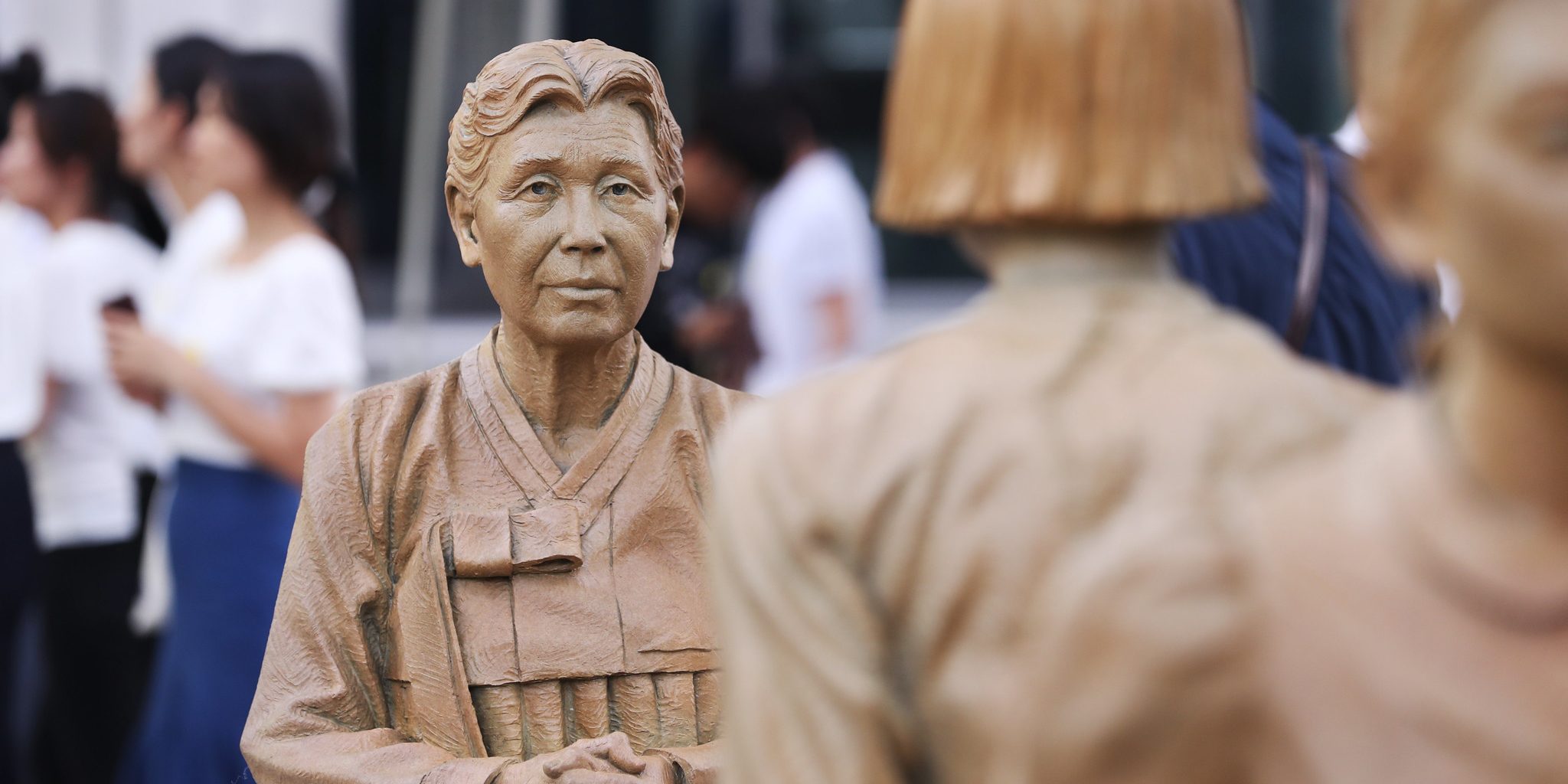Japanese Imperial Army troops came to force hundreds of thousands of women into sexual slavery during Japan’s militaristic period. From 1932 to 1945 these women were held in brothels and were forced into sexual slavery These girls were from the ages 14-19 years old. They were mostly located in Korea however, the Japanese Imperial army held other brothels in China, Taiwan, the Philippines, and other parts of Asia. Many of the women were taken as well as lured into this situation with the false pretenses of employment. As well as many were kidnapped from their own homes and dragged into these brothels. These women were repeatedly raped and beat daily. There are countless accounts of physical pain, pregnancies, sexually transmitted diseases, and unlivable conditions. The Japanese government was aware of these places as they wanted to keep their soldiers “healthy” and there were accounts of the government administering testing on the girls in these places to test for their sexual health. After the World War Ⅱ ended, many of the women were executed. Those who survived suffered from physical pain, infertility, psychological illness, and shame from their own community.
After years of silence and shame, Kim Hak-sun became the first woman to speak publicly about her trauma. She was traveling with her foster father when she was abducted and taken as a sexual slave. She escaped with the help of a Korean man who later became her husband. When they arrived back in Korea after 1945, her daughter died in a refugee camp as well as her husband during the Korean War.
In 1990 the Japanese government announced that Japan was not responsible for the issue of the comfort women and denied involvement of the stations. Kim Hak-sun came out in 1991 to dispel the Japanese government’s false version of what occurred and spoke to the press at the Korean Council for the Women Drafted for Military Sexual Slavery by Japan. Her bravery in coming forth pushed the 200 victims in Korea and in other Asian countries to come forth with their own stories.
The Japanese government still has tried to dispel the existence of comfort women and conceal the fault of the Japanese Imperial Army. In 2007, Japanese Prime Minister Abe Shinzo stated publicly that there was no evidence of coercion. He later took back that statement, however, in 2014 he petitioned the United Nations to revise its 1996 report where they confirmed the trauma these women experienced. This doubt has spread to Japanese citizens after a Japanese newspaper stated that he was retracting the stories from women being coerced as he forced them to admit these stories. After investigation, these claims were false and there was no public apology given to these women. This is a repeated pattern from the Japanese government. Recently 12 women have been suing the Japanese government for assets as they want the Japanese government to pay for the damages that occurred. This court case was ruled in a positive way then appealed to a negative ruling and now has been rejected from an appeal.
Written by: Samantha Garcia. From New York , United States . Current 4th year student at John Jay college of Criminal Justice .Pursing an International Criminal Justice B.A and a minor in Psychology. Intern at VANK (Voluntary Agency Network of Korea)
